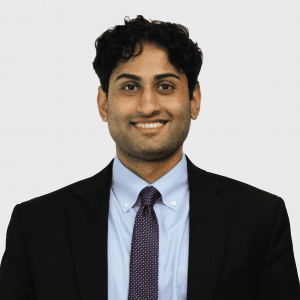Weekly Checkup
October 18, 2024
Harris’ Rural Health Care Plan: A Small Answer to a Big Problem
On Tuesday, presidential candidate Kamala Harris’ running mate Tim Walz announced a plan to address a variety of concerns facing rural residents. While the Harris campaign has yet to reveal details, according to several sources the plan would request that Congress permanently extend COVID-era telemedicine policies in Medicare, designate new grants to bolster the number of ambulances in rural areas, and incentivize 10,000 new “healthcare professionals” (which could include occupations from doctors and dentists to midwives and clinical social workers) to work in rural communities. Let’s discuss a few well-known barriers to rural health care – travel distance, specialty access, and physician retention – to understand why Harris’ rural health care proposal may fall short.
One of the primary barriers rural patients face in accessing health care services is the considerable distances many must travel to visit their providers. According to the Pew Research Center, “Rural Americans live an average of 10.5 miles from the nearest hospital, compared with 5.6 miles for people in suburban areas and 4.4 for those in urban areas.”
This barrier of distance is further complicated by an increasing number of rural hospital closures. Not only did rural patients experience an eightfold average increase in the distance they had to travel to access the nearest hospital between 2012 and 2018 due to closures, but also this problem will likely worsen as more than 300 rural hospitals are currently at risk of closing due to financial problems.
Another barrier to rural health care service access is the significant lack of specialty providers in rural communities. As highlighted in the American Journal of Managed Care:
…data from March show there are 3862 mental health professional shortage areas in rural areas… [furthermore] according to the Association of American Medical Colleges, only 50% of counties in the US have an obstetrician-gynecologist physician, which also means that 50% of counties don’t have these invaluable HCPs [health care providers].
The lack of access to specialty providers is worsened by rural hospital closures. As a U.S. Government Accountability Office report notes, not only is there a clear link between rural hospital closures and a reduction in specialty provider access, but for every rural hospital that closed, adjacent counties experienced on average a 26-percent decrease in the number of hospitals that offer the nine most utilized hospital services (including emergency and primary care). For comparison, counties without rural hospital closures experienced only a 4.6-percent decrease in the number of hospitals offering the same services. These barriers of distance and specialty access are compounded by the inability of many rural communities to retain skilled providers. Rural students, who are far more likely to return to rural communities, make up only a small fraction of all incoming medical students (less than 5 percent in 2017). Moreover, among all medical students in their final year, only 1 percent said they wanted to live – and by extension work – in communities with fewer than 10,000 residents, and only 2 percent said they would live in towns of fewer than 25,000. The lack of interest in practicing in smaller rural communities is not a new phenomenon. Since Congress created the National Health Service Corps in 1970 to address the maldistribution of physicians in the United States, there have been repeated attempts at multiple levels of government to keep providers in rural and underserved communities. While the issue of provider retention is a mixture of complicated factors, a primary problem with retention is salary. As one source explains:
Residents of rural counties are generally older, lower-income, and in worse health than people who live in urban areas. Therefore doctors in rural areas are more likely to be reimbursed through Medicare or Medicaid, which pays less than private insurance, and could be punished financially for having a sicker and poorer patient pool.
While Walz suggested a Harris Administration would encourage more health professionals to work in rural communities, there is no suggestion of addressing the underlying issues that discourage providers from remaining in these communities. Moreover, it is unclear if or how the campaign would address the shortage of specialty providers. Finally, it’s worth noting that the plan’s call for 10,000 new health care professionals to address the rural shortfall appears badly out of line with what’s needed to bring specialty-provider-to-patient ratios to a level more comparable to that of urban ratios (1 to 3334 compared to 1 to 380).
Many rural counties would benefit from an infusion of health care professionals into their communities. But from what we know of the Harris-Walz plan, it lacks the comprehensive and targeted policies necessary to incentivize a larger quantity of specialized doctors to practice in rural areas over the long term.











